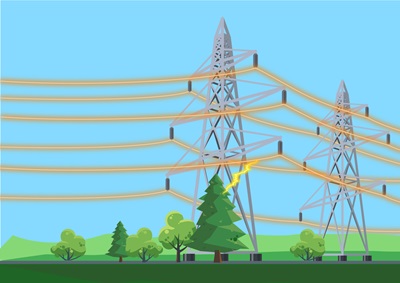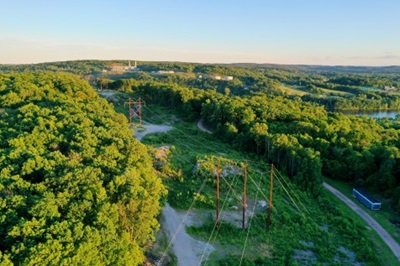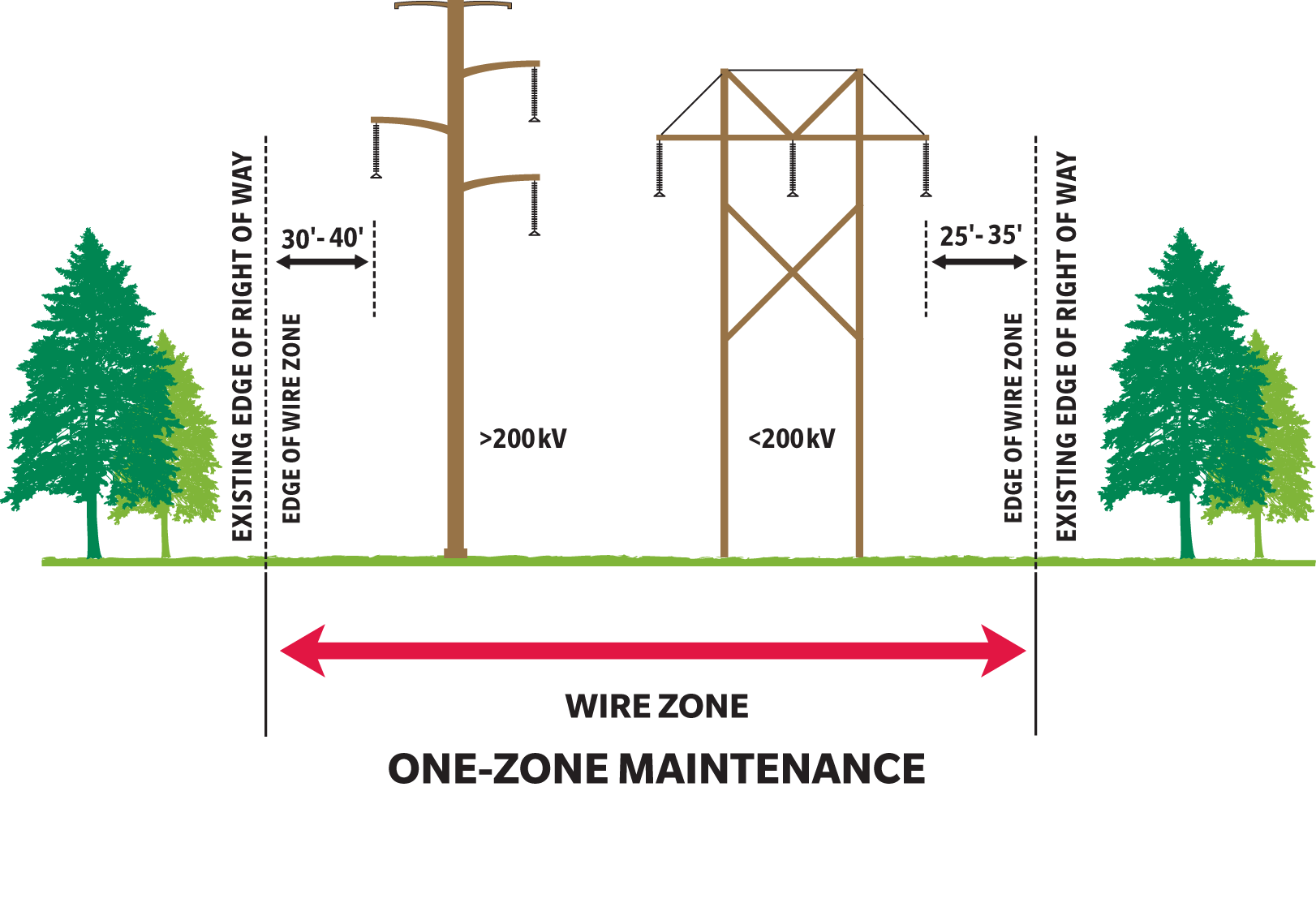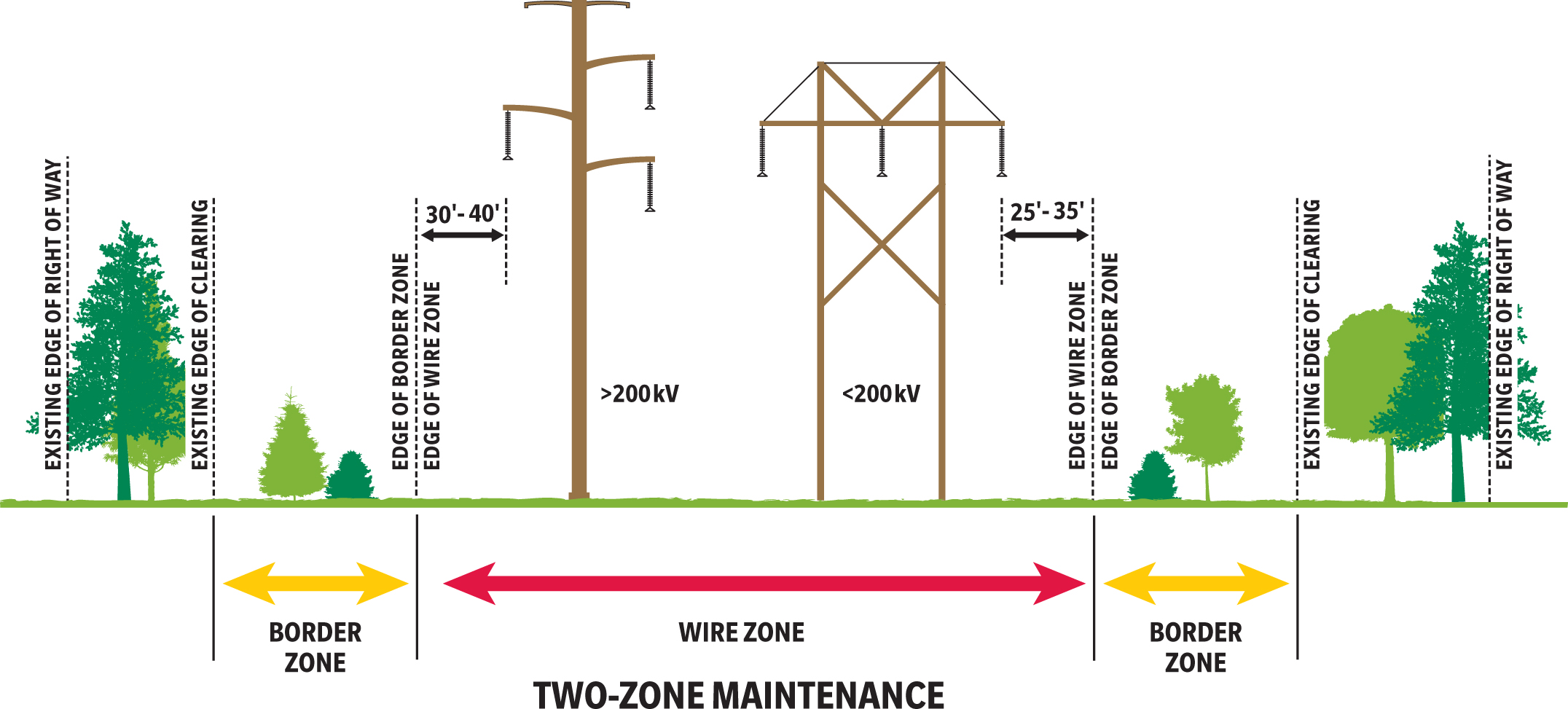Information on this page is for customers in
{{ town-name }}
Transmission System Vegetation Management
The transmission system is the highway of the electric grid. It carries high-voltage electricity from power generation sources to the lower-voltage distribution system that supplies power to homes and businesses.
We proactively maintain vegetation in a multi-year cycle to enhance reliability and prevent outages. See our latest projects.
Why Maintenance is Important
There are more than 4,000 miles of high-voltage transmission lines throughout our service territory. Everyone in the region depends on this system to deliver reliable electricity. Any interference can cause safety issues and power outages for thousands of customers.
The risk of electric arcs
Transmission lines are very different from distribution lines that run along streets delivering power to homes and businesses.
These high-voltage lines need air clearance to provide proper insulation and prevent an "electric arc." A tree or limb doesn’t even need to touch the line to create an electric arc that can be a public safety issue, cause an outage or spark a fire.
The amount of clearance needed between wires and vegetation depends on voltage, line height, distance between structures, topography, height of the tree species at maturity and the sway of the trees and the line.
Transmission Right of Way Maintenance Guidelines

We maintain cleared areas around transmission lines within our right of way corridors.
These areas are designed to maintain a safe distance between lines and the surrounding vegetation. We also use this space for fast access whenever inspection, maintenance or repairs are needed.
Rights of way vary in width and are classified as either one zone or two zone based on voltage and the amount and location of electrical equipment within the corridor.
One-zone maintenance

In a one zone right of way, we maintain vegetation that can grow above 15 feet at maturity. For transmission lines less than 200 kV, we maintain 25-30 feet out from the structures. For lines greater than 200 kV, we maintain 30-40 feet out from the structures.
In these areas we maintain a low-growing plant community of grasses, flowers, ferns and shrubs. This creates a sustainable ecosystems supporting many threatened and endangered species.
Two-zone maintenance

For wider rights of way, we maintain two-zones. We still maintain the wire zone, but we may also maintain vegetation in the border zone.
This is the area from the edge of the wire zone to the edge of the maintained portion on each side of the right of way. Within this zone, we remove vegetation with mature heights above 30 feet. Any other low-growing plant species are preserved.
Maintenance outside of the clearing
Our transmission facilities are typically located within our utility easement, called a right of way. This is an area of land on property we don't own but have been granted the right to use for installing, repairing, operating and maintaining transmission lines.
Outside cleared rights of way
Sometimes we identify trees outside of the cleared right of way that have the potential to grow or fall into transmission lines. In this case, we will notify property owners in advance of any work.
Outside of easements
We may also identify hazard trees outside of the easement. In this case, we will ask the property owner for permission to trim or remove the vegetation for safety and service reliability.
We know that sometimes this is the last thing a property owner wants to hear. Our arborists will work with you to answer any questions and even help you select compatible plant species for planting in or near right of way corridors. There are great options available for pollinating, providing shade and visual screening.
Promoting Healthy Ecosystems in Transmission Rights of Way
While safety and reliability are critical aspects of our vegetation management program, it's not the only thing we take into consideration. Transmission corridors play a critical role for native and protected plants, wildlife and pollinators and the ecosystems needed to support them.
Our arborists are focused on creating and maintaining healthy, early-successional, low-growing plant communities that support many threatened and endangered species.
We achieve this by carefully selecting diverse, native vegetation to create compatible habitats. And when it comes time to maintain vegetation, we individually evaluate each situation using integrated vegetation management (IVM) techniques.
This means selecting the most appropriate, environmentally sound and cost-effective solution to the problem.
Read more: A University of Connecticut survey found more than 200 protected plants, insects, amphibians, reptiles, birds and mammals making a home in our rights of way—including two of the most seldom seen bees in North America.
Transmission Vegetation Management Projects
Plans and information about our ongoing transmission vegetation management efforts.